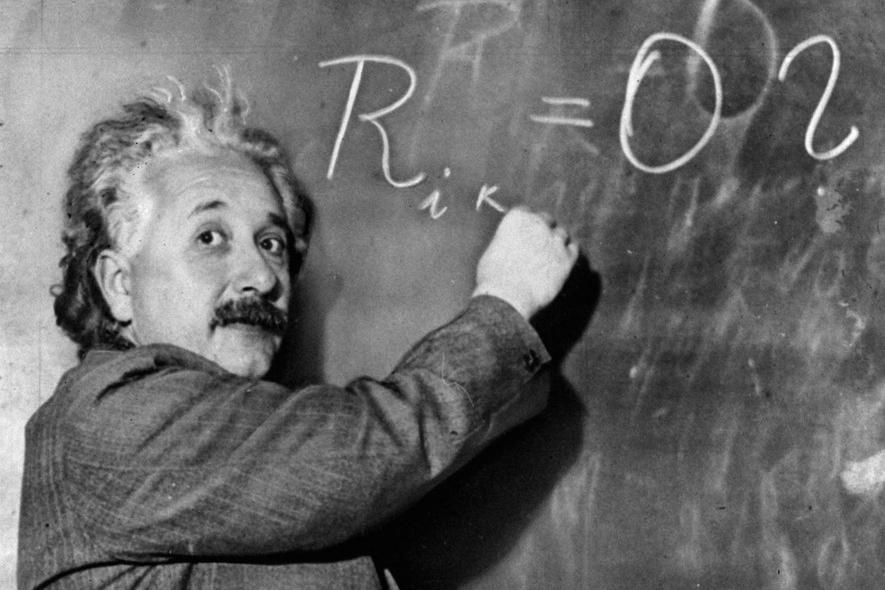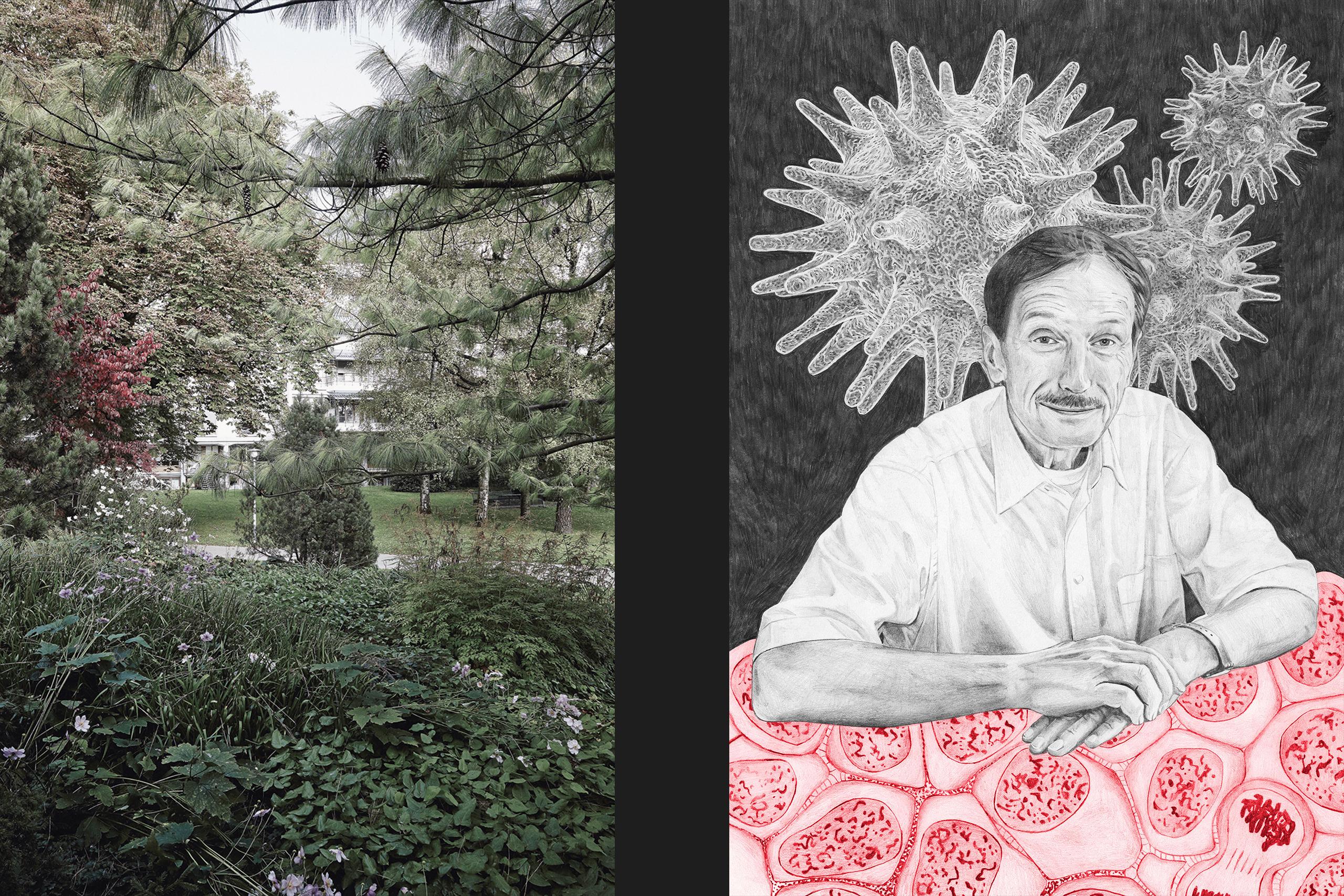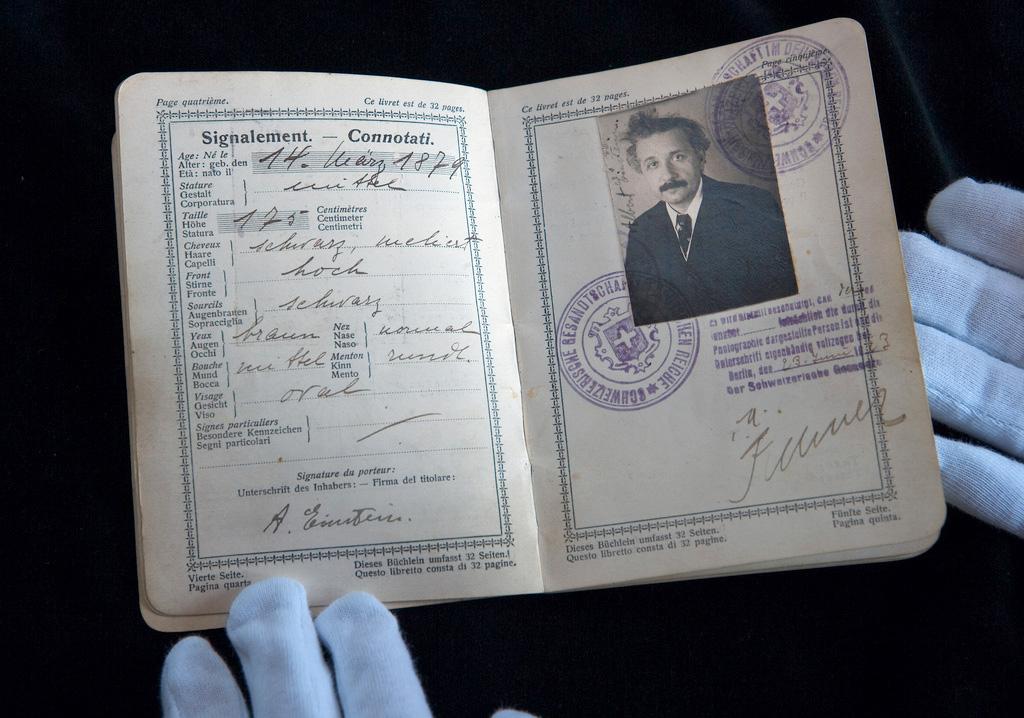Zurich, a magnet for Nobel winners

When Albert Einstein lived in Zurich, he used to prepare the groundwork for his revolutionary theories while sitting in a café. Many other Nobel Prize winners chose to spend time in the city for work, as an exhibition shows. A past laureate takes a guess at why.
Einstein, who gained the Nobel Prize for Physics in 1921External link, first came to Zurich as a student. After a stint at the BernExternal link Patent Office from 1902-1909, during which he developed the Special Theory of Relativity, he returned to Zurich as a professor of theoretical physics. He left the city in 1914.
“He wasn’t a particularly hardworking student, he preferred to study at home and the professors didn’t find this so great,” said Margrit Wyder, curator of the Einstein & Co – Zurich and the Nobel Prize exhibitionExternal link at the city hall, which found 63 Nobel laureates with connections to Zurich.
“He didn’t get an assistant professorship in Zurich, but he had some friends here, such as Marcel Grossmann, who later became a professor at the federal technology institute ETH Zurich and who got him the job in Bern. Grossmann also helped him later in Zurich with the General Theory of Relativity.”
Relativity and coffee
Grossmann and Einstein used to sit in the Café MetropolExternal link – which still exists – to talk about this theory, which celebrated its 100th anniversary in 2015. Grossmann helped with the calculations; he was better at maths, said Wyder.
In Einstein’s time, the café, which is not far from the banks of the river Limmat, was a Belle Époque establishment, styled along the lines of a Viennese Coffee House.
Today, it is a smaller, much sleeker affair, with only the outside archways and some photos on the wall attesting to its more ornate past. On a quiet winter’s morning, it was populated by older couples and ladies taking a break from shopping, as well as the odd businessman. A panel near the bar was showing what was on offer at the Metropol restaurant next door (sushi and sashami).
Photos of favourite city locations of 12 of the Zurich-associated Nobel laureates can be viewed at the exhibition, in addition to information about their life and work. The idea, Wyder explained, was to show what they did in their free time.
Wolfgang PauliExternal link, Nobel for Physics, 1945, and professor at the ETH Zurich, for example, had a long-time association with psychiatrist and psychologist Carl Gustav Jung.
Pauli first consulted Jung after a breakdown following the end of his first marriage. This is why the castle-like building housing the External linkPsychology Club ZurichExternal link, founded by Jung as a forum for his ideas, has been chosen as his Zurich place.

More
12 Zurich Nobel winners
Nobel criteria
So why has Zurich been associated with so many Nobel laureates? It must be noted that the exhibition criteria are rather wide: it was only necessary to have been in Zurich for a few weeks to be counted.
Nevertheless, the ETH Zurich lists 21 Nobel PrizesExternal link for researchers who have or had a connection to the institution and the University of Zurich has 12 portraitsExternal link on its Nobel website, including Rolf Zinkernagel, Nobel for Physiology or Medicine, 1996.External link
The Official Website of the Nobel PrizeExternal link counts 12 people with research affiliations in Zurich at the time of the Nobel Prize announcement.
Wyder says Zurich’s proximity to Germany, until World War Two the largest scientific nation, is one factor in its Nobel success. German students used to come to Zurich for a few semesters as a matter of course.
Another reason was the city’s stability in the inter- and post-war years, which held an attraction.
“The third reason is we have two excellent universities: the ETH Zurich is famous worldwide and this meant competition, so more opportunities for researchers in Zurich to study and learn,” Wyder said.
2002 chemistry Nobel laureate Kurt WüthrichExternal link agrees on the last reason, plus the fact there are “excellent conditions for research”.
Passions for research and sport
He has worked in Zurich for 46 years and, at age 77, has a contract as a full professor at the ETH Zurich until the end of 2018. “So I’ll make almost 50 years of it and it has been a great place to realise my dreams,” the professor told swissinfo.ch.
For the past 15 years Wüthrich has been working at The Scripps Institute in CaliforniaExternal link as well. He also has labs in China and Brazil.
He reckons, however, that there are probably only around 15 Nobel Laureates who have worked in Zurich most of their lives. Among those alive, there are six, he says.
Through his work at the beginning of the 1980s, Wüthrich was able to develop a tool which allows scientists to see three-dimensional images of marcomolecules, for example proteins, and to understand their function in a cell. This, the Sweden-based Nobel Committee said, has helped revolutionise the development of new pharmaceuticals.
Zurich’s modern Letzigrund StadiumExternal link has been chosen as Wüthrich’s favourite place in Zurich in the exhibition. The professor, a certified sports instructor – “my best university diploma” – played football for more than 30 seasons, in his older days in the senior league with the FC Wallisellen, including matches at the Letzigrund.
Scoring a goal makes you an immediate hero, but in science you have to wait: you have your own doubts, criticism comes from outside, and others need to repeat your experiments to confirm the results, as the professor explains in this official Nobel Prize video.
“The Swedes may take years and years to make sure you were first,” the professor added to swissinfo.ch. “And this may take forever. That’s why it sometimes takes so long for the prize to come after the discovery.”
The exhibition
Einstein & Co – Zurich and the Nobel Prize run at Zurich city hall until January 23, 2016. It includes 63 Nobel winners who have links to Zurich, having stayed there for a few weeks or for many decades. Twelve make it into the “Hall of Fame”, a mix of current and past winners. There are three women among the 63: Bertha von Suttner, (Peace, 1905), Nelly Sachs (Literature, 1966) and Herta Müller (Literature, 2009).
In a 15-minute film entitled “Zurich, a hotspot of geniuses”, young people studying the same disciplines as the Nobel Prize winners explain how they have been inspired by them.

In compliance with the JTI standards
More: SWI swissinfo.ch certified by the Journalism Trust Initiative



You can find an overview of ongoing debates with our journalists here. Please join us!
If you want to start a conversation about a topic raised in this article or want to report factual errors, email us at english@swissinfo.ch.